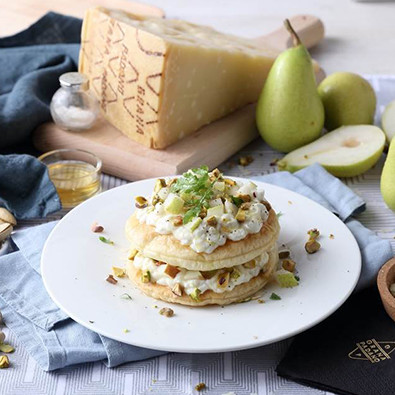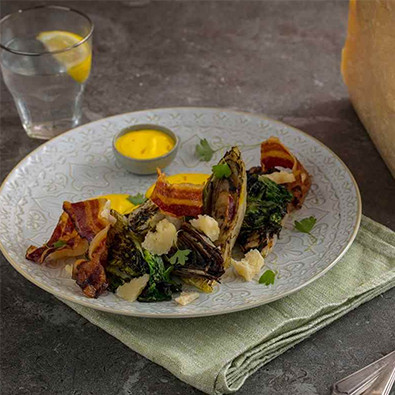
Grana Padano and Asparagus ‘Pastiera’ (Pie)
The Neapolitan Pastiera is an iconic pie or quiche not only in the city of Naples but over the whole south of Italy. A sweet pie that is always found on the tables during the Easter holidays which is synonymous of family gatherings and Sunday lunches. The short crust crunchy base and the aromatic rustic chunky filling made of cooked wheat, ricotta and candied fruit makes it recognizable and loved all over the country, so much so that many more versions have been created while families and mammas started experimenting with their own recipes.
For that reason, when I was asked to create a savoury pie with Grana Padano, I decided that there was no better option than to create a cheesy tasty Pastiera using the most famous Italian cheese and incredibly tasty British asparagus. I urge you to give it a try, it makes for a great centerpiece for a Sunday meal.
Chef tip: Cooked wheat in UK is usually found on specialties shops, Italian delis or online, if you cannot find it you can easily swap it for plain rice, cook it in milk until absorbed but still creamy and add the butter to it.
Ingredients
- For short crust pastry:
- 200 g of 00 or plain flour
- 120 g of softened unsalted butter
- 35 g of grated Grana Padano
- 1 whole egg
- 1 whole egg for the egg wash
- For the filling:
- 125 g of cooked wheat
- 50 ml of milk
- 50 g of butter
- 1 egg
- 125 g of soft ricotta cheese
- 100 g of grated Grana Padano cheese
- 10 asparagus
- Salt and pepper to taste
- Extra milk optional
Preparation












